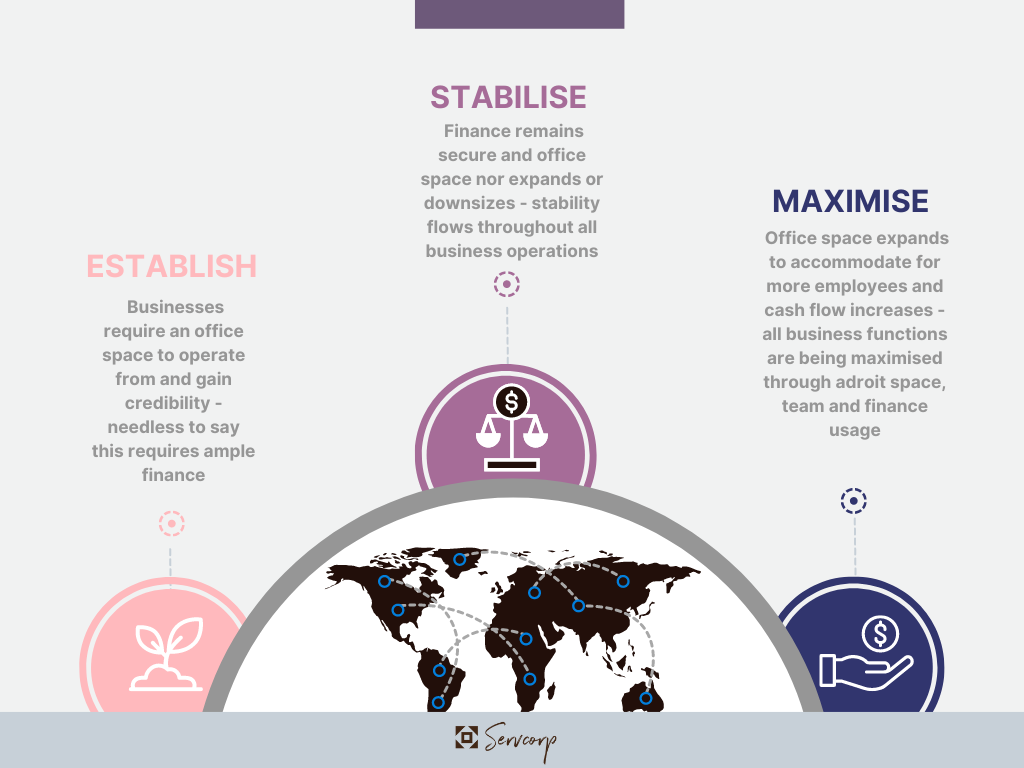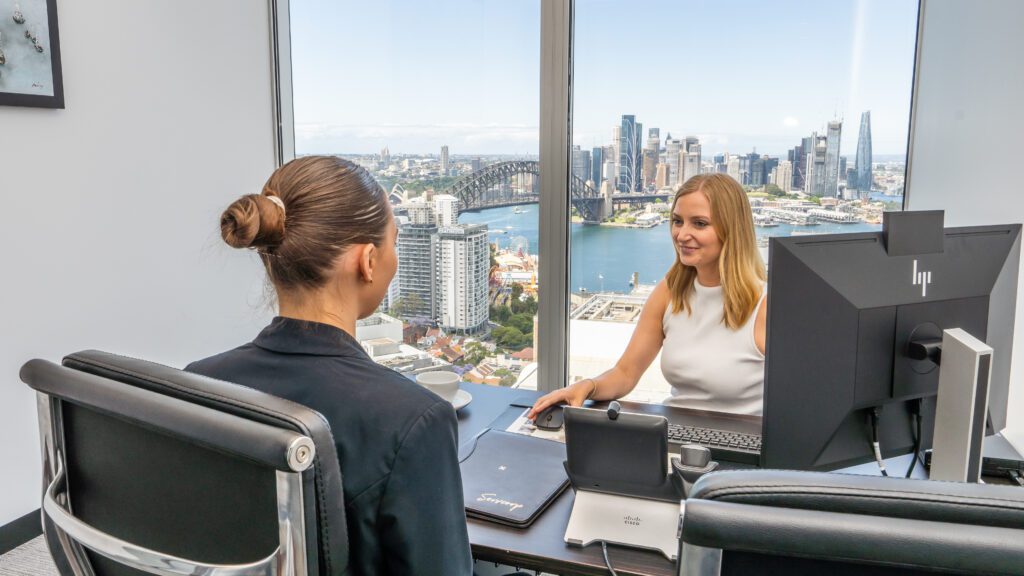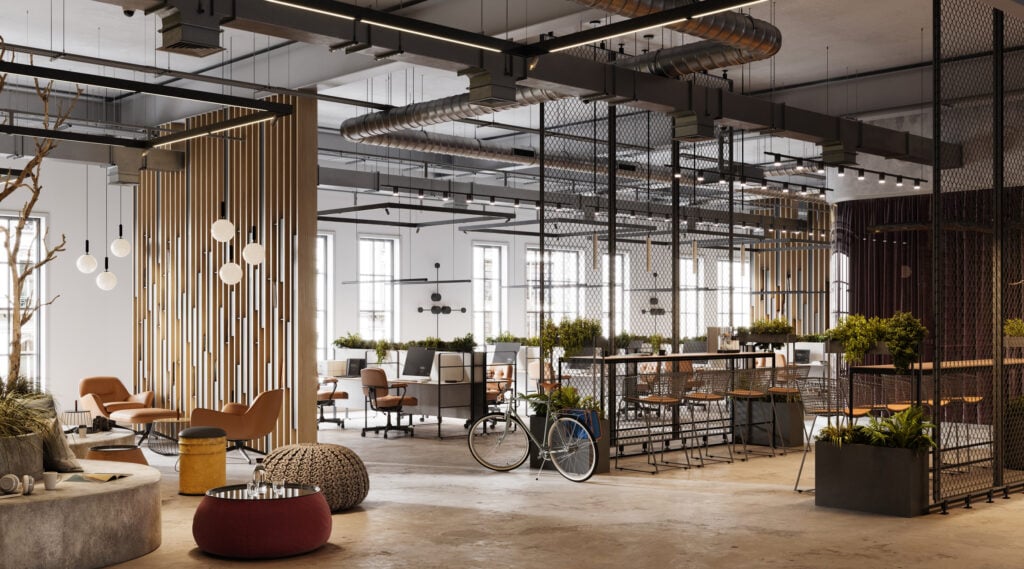Leasing an office space is a major milestone for every business owner. Having your own commercial real estate signifies an established business and provides the credibility needed to set yourself apart.
However, while securing an office space for your business is essential, it will undoubtedly be one of the largest costs to your company. There are a wide range of factors that must be considered before leasing an office space because of the many underlying costs related to commercial real estate.
This guide will provide a complete overview on all the costs related to leasing an office space and give cost saving advice. We will also assess the difference in cost between conventional office space and an alternative, so you can select the most optimal office solution for your business.
Business Life Cycle and Cash Flow

Without a physical space to operate from your business sacrifices functionality and lacks credibility, whilst no finance means your business can’t afford space, technology, staff and just about everything. At the same time, every business aims to increase their clash flow to make profit but this proves to be challenging at the start as most begin with debt due to commercial real estate’s high cost – hence, this equilibrium is something that needs to be balanced at the establishment phase of the business to ensure a smoother journey.
Whether you’re a solo entrepreneur, small to medium business or large enterprise, these two factors are obligatory for a business to exist – in fact, some countries don’t permit businesses registration without an appropriate address.
The Average Cost of Leasing Office Space
The monetary figure behind leasing an office space is influenced by a variety of factors which include the location, size of the space, lease term and the class of asset.
How to Calculate Office Space Rent
According to data from Commercial Real Estate, the formula in determining the cost of an office space is based on a dollar-per-square metre figure.
Below is an example:
Let’s say an 80sqm commercial real estate you desire is advertised as $70 per square metre per month. Using the formula of 70 x 80 x 12, your annual rent will equate to $67,200 and this is generally not inclusive of GST.
To add GST into the total, simply calculate ten percent of your annual rent and add it to the figure. In this case, we end up with a grand total of $73,920 – the payment frequency of the rent is usually on a monthly or per annum basis.
What are Outgoings? What are the most Common Types of Leases?
If you luckily have a ‘gross-rent’ lease then you are not required to pay for building outgoings as this is all covered within your rent. Unfortunately gross-rent isn’t all that common, which is why businesses end up having additional costs when finding an office space for rent – these are known as outgoings.
- Council rates
- Water rates
- Building insurance and land tax
- Cleaning
- Maintenance/gardening
- Common electricity
- Security
- Grounds maintenance
- Lift servicing
There are also two more common leases: ‘semi-gross lease’ and ‘net lease’.
In a net lease the occupant of the commercial real estate will pay for rent and all outgoings.
Whereas the semi-gross lease operates under two possible structures:
Listed outgoings
In this structure the lease will require the office space occupant to only pay for specific outgoings. There is not set format in this method and the payable outgoings can vary from lease to lease.
An increase per year
This structure includes the outgoing costs in the rent, but the rent will be adjusted as the prices of outgoings increase. For example, a commercial real estate occupant is paying $40,000 per annum, however the following year the cost of outgoings increase from $8000 to $10,000, therefore the tenant’s rent is adjusted to $42,000.
Outgoings are a constant cost to businesses, hence understanding this before leasing an office space is important to avoid unwanted surprises.
Office Space Cost per Area
According to Colliers International recent data, the average cost of leasing an office space has increased in most cities but the incentives are mostly the same.
Commercial rent incentives are a percentage range which indicate to what degree a landlord can adjust their rental rates based on market conditions and demand.
With the average office space per employee being 12-14 square metres, a solo business owner can expect to pay around $162,000 per annum for a prime office space in the Sydney CBD. This price vastly increases when your business has a team and you require additional space.
What is the Alternative?
Now that we’ve established the rent of an office space, highlighted the lease types and recognised the outgoings, it’s time to create a comparative cost on the most similar alternative – the serviced office.
It should be noted that the costs stated earlier are strictly for the office space itself and business owners need additional capital for furniture, hardware, technology and the labour involved in installing everything.
What is a Serviced Office?
A serviced office is an office space in a building provided by an operator, which can be rented on a usage basis. They are a fully furnished private space that can be leased and businesses can easily upsize or downsize depending on their needs.
The rent of a serviced office is significantly less than a traditional office space, whilst coming with many benefits that can save business owners a fortune.
Leasing a Serviced Office
A major benefit of renting a serviced office is the flexible lease terms that accompany it.
Depending on the location, a standard lease for an office space can range anywhere from five to more than ten years. This is a major commitment and is typically the biggest barrier of entry for smaller businesses which are wanting to acquire an office space.
A serviced office can be leased on a monthly, half yearly and yearly basis to give business owners a minimal risk contract. Serviced offices are normally rented on a semi-gross lease, with costs only increasing to match the outgoings paid by the operator.
The Cost of a Serviced Office
Other than the physical size, the rent of an office space is determined by the location.
Having an office space in an iconic building such as International Towers Barangaroo or a heritage building like MLC Centre would usually be a large capital expenditure, but a serviced office can greatly reduce this.
For example, a Servcorp serviced office in Barangaroo can be rented from $1900 per month, equating to $22,800 per annum. Upon comparing this to the example provided under Office Space Cost per Area, a business can save $139,200 on space – that’s around 86% cheaper.
However, the capital businesses save with a serviced office doesn’t stop there.
The additional cost saving benefits of a serviced office

Having space isn’t the only cost your business needs to tackle upon being established. The cost involved in buying the right technology, installing hardware and software, furniture and hiring a team will undoubtedly eat into your cash flow.
While we can’t speak on the cost saving benefits of other operators, below is a comprehensive breakdown on all the capital a business can save with a Servcorp serviced office.
Fully Furnished
Ready-to-Use Technology
Other technology a Servcorp serviced office includes:
A highly secure network which costs around $0.10 per hour per VLAN attachment – a small business with ten employees would pay approximately $8760 per year.
Serviced office tenants receive a virtual local landline number for their business. Call routing technology enables all calls out of business hours to be directed to any of your selected numbers such as home, mobile, co-workers etc.
According to research, your business can expect to pay between $20,000-$500,000 on software and equipment, $25,000 or more on installation and 15-20% of the initial license cost for maintenance and updates.
A tier-1 internet connection implies you either own or control your portion of the internet, while the lower tiers indicates that you lease bandwidth from them. Servcorp is its own internet service provider (ISP) which not only ensures speed, but also reliability and safety. There is no set price, however becoming an ISP requires a minimum of $25,000.
A commercial firewall for a very small business can start from $700 and reach up to $10,000 depending on the number of users. These enable you to create a firewall tailored for your business, however it’s important to have the right team of professionals install this.
All of this technology assists in creating robust cybersecurity and is part of best business practices to remain safe. A serviced office operator such as Servcorp, has invested US$100 million to enable its unique technology globally.
A Team to Delegate to
A traditional office space comes with four walls and a ceiling but you still require the capital to pay for a team.
Even if you’re a solo entrepreneur, every business owner will benefit from a team. The time saved by delegating tasks enables businesses to focus on duties which produce sales. This is especially true with administrative tasks which eat into productivity – hence why secretarial and telephone answering service have may benefits.
However, as a business other than the salary you must pay your employees, you also incur other costs.
The time taken to plan a job advertisement, find candidates and selecting the right applicant can take approximately 42 days of your time. Additional costs such as sick leave, accrued annual leave, payroll and the process of rehiring if a team member leaves are all liabilities.
Dedicated Receptionist:
This saves businesses a salary of up to $60,000 which can be utilised towards other business operations.
In-house I.T Support:
Technical downtime not only hinders your operations but can leave your business vulnerable as it waits to outsource assistance, whilst dealing with the time taken to convey the issue and receive help.
Included in the rent of a serviced office is an in-house team of I.T experts. These technicians provide customisable security and deliver instant assistance for simple or complex networking issues.
With the average salary of an I.T technician ranging from $60,000 to $80,000 – that’s another significant amount of capital which can be used towards business development.
Secretarial Support:
Administrative tasks are one of the most time consuming duties which produce no capital. Research suggests that small businesses lose up to $14,857 per year from time consumed on administrative tasks.
To save your business time and assist you across a range of tasks including data processing, file maintenance, archive handling, graphic design, expense claim preparation and more, a secretary is part of your team at a serviced office. Virtual assistance is also available if you happen to be working out of the office.
Through this your business receives an approximate added value of $74,750.
Which Option is Suitable for my Business?

The choice between selecting a traditional office space compared to a serviced office is dependent on the stage of your business life cycle and needs.
As a smaller business, investing in a traditional office space opens the door of greater branding options and customisation, however the associated costs are a major drawback. With thousands of businesses failing due to a lack of cash flow it is important to be proactive and save capital where possible. Businesses must also be financially prepared for outgoing costs and commit to lengthy leases in a phase of their business that may not be stable.
A serviced office is a suitable alternative for any stage of the business life cycle because of its low risk and cost profile. Serviced offices with the right technology can enable businesses to work hybrid and seamlessly upsize or downside because of their short lease durations. There are many serviced office locations to cater for all businesses across Australia, however, if neither options seem palpable for your business then consider switching to a coworking space or a virtual office.










